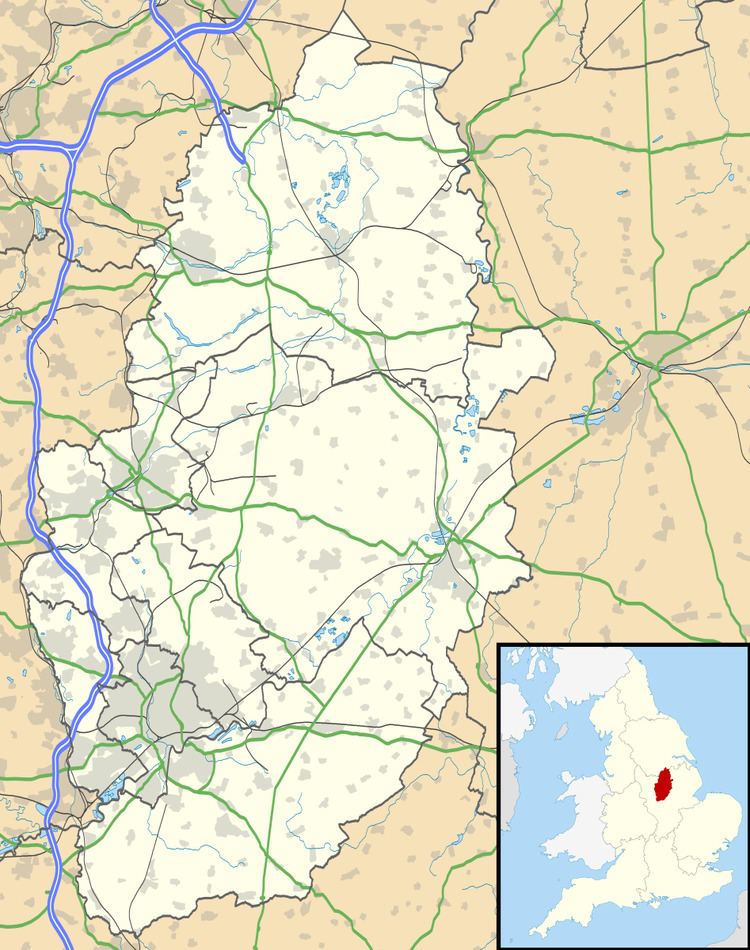Airport type Military In use 1939–2000 (2000) 07/25 4,035 Elevation 55 m | Elevation AMSL 180 ft / 55 m Year built 1939 | |
 | ||
Similar Rushcliffe Borough Council, Richard Watkinson & Partners, Lady Bay Preschool, Bingham Town Council, Frank Innes | ||
Exploring abandoned air base raf newton
Royal Air Force station Newton or more simply RAF Newton (ICAO: EGXN) is a former Royal Air Force station located 7 miles (11 km) east of Nottingham, Nottinghamshire and 10.7 miles (17.2 km) south west of Newark-on-Trent, Nottinghamshire, England
Contents
- Exploring abandoned air base raf newton
- Raf newton from the air
- Second World War
- Post war
- Other units
- Current use
- Radioactive Contamination
- References
It was used briefly as a bomber base for squadrons to re-equip after the Battle of France and then as a flying training school during the Second World War and beyond until 2000.
Raf newton from the air
Second World War
Built in 1939, Newton was assigned to No 1 Group in June 1940. On 3 July 1940 No. 103 Squadron RAF moved from RAF Honington with their Fairey Battles before changing to the Vickers Wellington IC in October 1940. On 11 July 1941 the squadron moved to RAF Elsham Wolds, also on 3 July 1940 (the same date when 103 Squadron arrived) No. 150 Squadron RAF arrived from RAF Stradishall again initially with the Battle before changing to Wellington IA during October 1940 however later in the month the Wellington IC was introduced to the squadron. The squadron left on 10 July 1941 going to RAF Snaith.
Newton then became a training base, and for the next five years between July 1941 and December 1946 No. 16 (Polish) Service Flying Training School provided basic and advanced training for Polish airmen serving with the RAF, using RAF Tollerton as a satellite landing ground.
The following units were posted to Newton during this time:
Post-war
The station became the headquarters of No 12 Group, Fighter Command from 1946 until 1958, when Technical Training Command took over the station for electronic fitters courses.
Later the station became the home of the RAF School of Education, who moved from RAF Upwood in 1972, and the RAF Police Training School, who moved from RAF Debden in 1974 bringing their gate guardian – a Hawker Hunter F1, WT694 (now at Caernarfon Air World) – with them. Both of these units transferred to RAF Halton in the 1990s.
Also in its history, the station has been home to the Headquarters Air Training Corps, which later moved to RAF Cranwell in 1995, the same year, the RAF Police Dog School based there since 1975 was amalgamated with the RAVC to form the Defence Animal Centre (DAC) at Melton Mowbray.
The station badge featured the Polish Eagle holding a flaming torch in each talon with the motto "Docemus et Discimus" which translates as "We teach and we learn", reflecting the Polish training role in the Second World War.
The station had also become the home of the newly formed Nottingham University College Air Squadron in 1941, providing newly trained pilots for the RAF. During the 1960s Newton was home to a Air Experience Flight of de Havilland Canada DHC-1 Chipmunk aircraft which were used by local squadrons of the Air Training Corps. The East Midlands University Air Squadron continued flying at Newton, with Scottish Aviation Bulldog aircraft, until moving its flying activities to RAF Cranwell in 2001. In the latter years, civilian-operated Slingsby Fireflies were also based at Newton for basic military training on behalf of RAF Cranwell.
Other units
The following units were posted to Newton during this time:
Current use
Today the site is a private industrial estate and the buildings are being converted into offices and storage space. The old control tower still stands and is being renovated into offices; the grass airfield has reverted to agriculture. Nottinghamshire Police use parts of the site for public order, method of entry and police dog training.
Just outside the main gate, the old NAAFI building is currently the home to 1936 (Newton) Squadron of the Air Training Corps, currently commanded by Flt Lt Liam Waring RAFVRT, creating continuing RAF presence on the site.
The abandoned houses on the base were used to film scenes from the film This is England. It has also been used for the television series Robot Wars after it transferred to the commercial UK channel Five.
The site is located within Nottingham's Green Belt.
Proposals for building a large number of homes on-site are well developed.
Radioactive Contamination
The RAF Newton site is, according to the Ministry of Defence (MoD), contaminated with Radium. The contamination comes from Radium that was used to coat the dials of aircraft and other equipment so that they could be seen in the dark. It was in scrap burned and dumped in the 1940s and 1950s, and remains radioactive for thousands of years.
